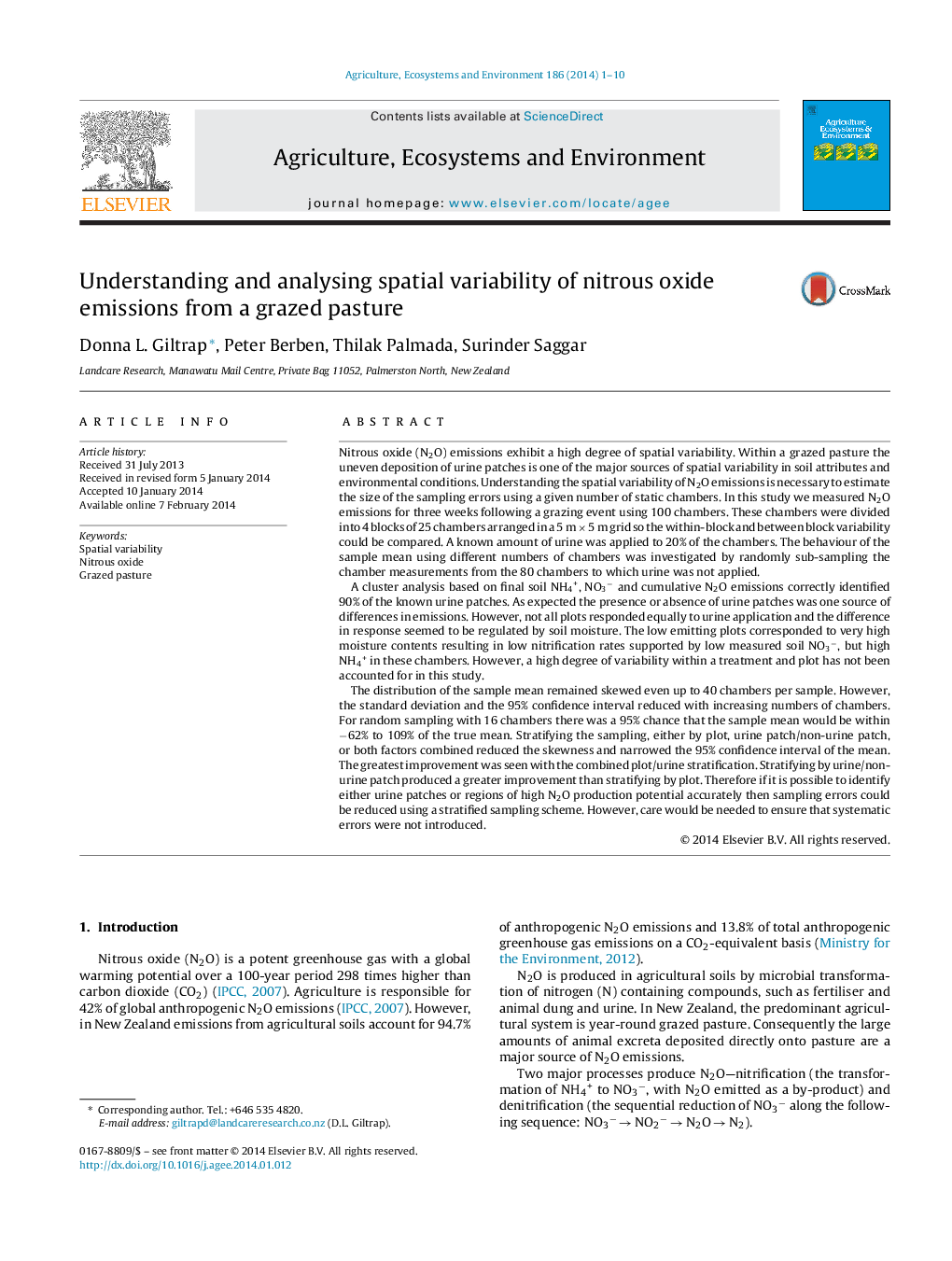| Article ID | Journal | Published Year | Pages | File Type |
|---|---|---|---|---|
| 8487897 | Agriculture, Ecosystems & Environment | 2014 | 10 Pages |
Abstract
The distribution of the sample mean remained skewed even up to 40 chambers per sample. However, the standard deviation and the 95% confidence interval reduced with increasing numbers of chambers. For random sampling with 16 chambers there was a 95% chance that the sample mean would be within â62% to 109% of the true mean. Stratifying the sampling, either by plot, urine patch/non-urine patch, or both factors combined reduced the skewness and narrowed the 95% confidence interval of the mean. The greatest improvement was seen with the combined plot/urine stratification. Stratifying by urine/non-urine patch produced a greater improvement than stratifying by plot. Therefore if it is possible to identify either urine patches or regions of high N2O production potential accurately then sampling errors could be reduced using a stratified sampling scheme. However, care would be needed to ensure that systematic errors were not introduced.
Related Topics
Life Sciences
Agricultural and Biological Sciences
Agronomy and Crop Science
Authors
Donna L. Giltrap, Peter Berben, Thilak Palmada, Surinder Saggar,
